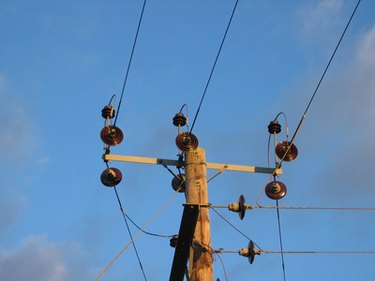
A parallel circuit is an electrical circuit which has two or more paths for an electrical charge to flow through. The parallel circuit is the standard electrical circuit found in most homes and devices. Because it provides more than one way for a current to flow through to a device, it creates a much more stable and efficient power system than would otherwise be possible. The uses of the parallel circuit are manifold.
Homes
Video of the Day
It would be difficult to find a home that did not use parallel circuits in its basic electrical wiring. Because of parallel circuits, power can be cut off to one device or appliance on a line without cutting off power for another. Also, if a malfunction or a short circuit occur, the circuit will not necessarily disable the entire power supply for the house. A parallel circuit allows all devices equal access to the same power.
Video of the Day
Infrastructure
Parallel circuits are one of the main building blocks used in the infrastructure that supplies power to large populations. By making use of parallel circuits, engineers have been able to create power grids that are both more secure and more efficient. When power goes down in one circuit of a grid, the others maintain function. Parallel circuits also make it easier to provide an equal power supply to different homes and buildings.
Devices
Parallel circuits are used inside many electrical devices and appliances. The main reason parallel circuitry is used in this context is to take advantage of more than one power source, like when more than one battery is being used in a portable device. Using parallel circuits, a device takes an equal amount of power from different sources and combines it on the same line. Parallel circuits have also made devices like Christmas lights more reliable.